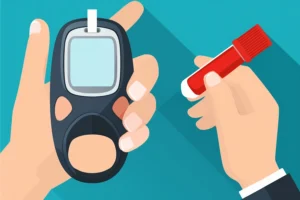Immunization stands at the heart of public health, offering one of the most powerful and cost-effective strategies to protect individuals and communities from disease. It is not only a fundamental component of primary health care but also a universal human right that supports the well-being of all age groups.
By strengthening the immune system against infectious threats, vaccines play a pivotal role in saving millions of lives each year and in curbing the spread of contagious illnesses.
Beyond individual protection, immunization is essential for safeguarding global health security. It acts as a frontline defense during disease outbreaks and significantly reduces the burden on healthcare systems. Moreover, as antibiotic resistance continues to rise, vaccines provide a critical alternative in preventing infections that might otherwise require antimicrobial treatment.
In an era where health challenges are constantly evolving, vaccination remains a cornerstone of disease prevention shielding not only those who are immunized but also those around them. As we explore science, benefits and impact of immunization, it becomes clear that this simple intervention holds the key to a healthier, more resilient future.
What is Immunization?
Immunization is the process of building protection against infectious diseases by enhancing the body’s natural immune defense. It can be achieved through two main approaches: active immunity and passive immunity.1
Active Immunity
Active immunity develops when a person is exposed to antigens, typically through vaccination. These antigens stimulate the body’s immune system to produce antibodies and memory cells, much like it would during a natural infection without causing the actual disease. This immune response can involve both antibody production (humoral immunity) and the activation of immune cells (cell-mediated immunity), offering long-lasting protection.
Vaccines used to induce active immunity come in several types:
◦ Live attenuated vaccines – use weakened forms of the pathogen
◦ Inactivated vaccines – contain killed organisms
◦ Toxoid vaccines – made from inactivated bacterial toxins
◦ Subunit vaccines – include only parts of the pathogen (like proteins or sugars)
◦ Nucleic acid vaccines – use genetic material (like mRNA or DNA) to instruct cells to trigger immunity
◦ Viral vector vaccines – use a harmless virus to deliver genetic material from the target pathogen
Passive Immunity
Passive immunity provides temporary protection by directly supplying antibodies to an individual. This can happen naturally, such as when antibodies (IgG) pass from a mother to her baby during pregnancy. It can also be done medically, through the administration of antibody-containing products like immunoglobulins or monoclonal antibodies used in cases of hepatitis B, tetanus, rabies or RSV exposure. Since the body doesn’t produce these antibodies itself, passive immunity does not lead to long-term protection.
Why Immunization is Important
Immunization is one of the most powerful and cost-effective tools in modern medicine. It plays a vital role in saving lives, protecting communities and supporting global health security.2,3,4,5
1.Protects Individuals and Communities
Vaccines protect individuals, especially children from serious and potentially life-threatening diseases like measles, diphtheria, influenza, tetanus and polio. When a large portion of the population is vaccinated, it also helps shield those who can’t be vaccinated, such as newborns or individuals with weakened immune systems, by reducing the overall spread of infections. This concept known as herd immunity, is essential for maintaining public health.
2.Boosts Long-Term Health and Child Development
Vaccination in early life reduces the frequency of infectious diseases, helping children grow healthier and stronger. Scientific studies show that children who receive vaccines on time tend to have better physical growth, improved cognitive performance and higher school attendance. This benefit extends into adulthood, promoting greater economic productivity and improved quality of life.
3.Strengthens Economic Stability
Preventing disease through immunization helps reduce the need for costly treatments, hospital stays and lost workdays. In low- and middle-income countries, where out-of-pocket health expenses are high, vaccines play a critical role in preventing families from falling into poverty due to medical costs. Investing in vaccines is not just a health decision, but also an economic safeguard.
4.Reduces Disease Burden and Disability
Vaccines help lower the incidence of diseases that can cause lifelong disabilities. For example, measles can lead to hearing loss, vision problems and developmental delays, while polio can result in permanent paralysis. By immunizing children at the right time, such long-term complications can be prevented, contributing to a healthier and more inclusive society.
5.Supports Global Disease Elimination
Immunization efforts have led to the elimination of deadly diseases in several countries. Smallpox has been eradicated globally and polio is now confined to a few regions. Continued vaccination ensures that future generations remain protected from these once-widespread threats.
6.Fights Antimicrobial Resistance (AMR)
Vaccines reduce the number of infections and, consequently, the need for antibiotics. This helps in slowing down the emergence of antimicrobial resistance, a major global health threat that could cause millions of deaths annually by 2050 if left unaddressed.
7.Mitigates the Impact of Outbreaks
Vaccination is a crucial line of defense during disease outbreaks. As seen during the COVID-19 pandemic, the absence of immunity in large populations can strain healthcare systems. Routine immunization helps maintain community resilience and quick recovery from such crises.
8.Promotes Social Equity
Routine immunization is particularly impactful in marginalized and low-income communities, where access to clean water, sanitation and nutrition may be limited. Vaccines offer these populations a chance to avoid devastating health and financial consequences, reducing health disparities and promoting fairness.
9.Civic Responsibility and Collective Benefit
Getting vaccinated is more than a personal choice, it’s a social responsibility. It helps prevent the spread of infections to vulnerable individuals in the community, such as the elderly, those undergoing cancer treatment or people with chronic illnesses. Vaccination not only protects your own family but also contributes to the safety and wellbeing of others.
WHO-Recommended Immunization Schedule for Children
Routine immunization protects children from life-threatening diseases. The World Health Organization (WHO) provides global guidelines for routine immunizations, which serve as a foundation for countries to develop their own national immunization schedules. These guidelines are tailored by each country to address specific health needs, disease prevalence and healthcare infrastructure. The WHO recommends vaccines to be administered at specific ages for optimal protection.
Below is a simplified, age-based summary of the current recommendations:6,7

◦ BCG (Tuberculosis): Single dose as soon as possible after birth.
◦ Hepatitis B (HepB): Birth dose within 24 hours (Optionally followed by 2–3 additional doses).
◦ Polio (bOPV): Birth dose, especially in high-risk areas.

◦ DTP-containing vaccine: First dose (Diphtheria, Tetanus, Pertussis).
◦ Polio (bOPV + IPV): First dose of bOPV and fractional or full dose IPV.
◦ Hib (Haemophilus influenzae type b): First dose.
◦ Pneumococcal Conjugate Vaccine (PCV): First dose (as 3p+0 or 2p+1 schedule).
◦ Rotavirus: First dose depending on product.

◦ DTP-containing vaccine: Second dose.
◦ Polio (bOPV): Second dose.
◦ Hib: Second dose.
◦ Rotavirus: Second dose (if 3-dose schedule).

◦ DTP-containing vaccine: Third dose.
◦ Polio (bOPV + IPV): Third bOPV dose; second IPV dose.
◦ Hib: Third dose (if following 3-dose schedule).
◦ Pneumococcal: Second dose (if using 3p+0 schedule).
◦ Rotavirus: Third dose (if applicable).

◦ Malaria Vaccine (RTS,S/AS01): First dose (in moderate to high transmission areas).

◦ Japanese Encephalitis (Inactivated): First dose (in endemic regions).
◦ Malaria: Second dose.

◦ Malaria: Third dose.

◦ Japanese Encephalitis (Live Attenuated): Single dose option.
◦ Malaria: Fourth dose (6–18 months after third).

◦ Measles-containing vaccine (MCV): First dose.
◦ Rubella: Co-administered with MCV.
◦ Yellow Fever: One dose with MCV (in endemic regions).
◦ Live Recombinant JE Vaccine: Single dose option.
◦ Meningococcal A Conjugate (MenA): One dose between 9–18 months.

◦ Hepatitis A (Inactivated): First dose.
◦ Measles-Rubella or MMR: Second dose (in countries with 9 months for first dose).
◦ Pneumococcal Booster: If using 2p+1* schedule.
◦ Mumps: First dose (usually given as MMR).
◦ Varicella: First dose.

◦ DTP Booster: First booster.
◦ Hib Booster: If using 2-dose schedule.
◦ Pneumococcal Booster: For 2p+1* schedule.
◦ Japanese Encephalitis (Inactivated): Second dose.
◦ Typhoid Conjugate Vaccine (Typbar-TCV): One dose (>6 months age).

◦ Cholera (Oral Vaccines):
-Dukoral: Two doses (≥6 years), three doses (2–5 years), with boosters.
-Shanchol/Euvchol/mORCVAX: Two doses from 1 year of age, booster after 2 years.
◦ Meningococcal Conjugate (Quadrivalent): One dose (if not given earlier).
◦ Vi Polysaccharide Typhoid Vaccine: One dose (minimum age 2 years); revaccinate every 3 years.

◦ DTP Booster (Td or DT): Second booster.

◦ Dengue (TAK-003): Two doses, 3 months apart (in high transmission areas).
◦ Typhoid Ty21a Capsules: Four doses for children ≥6 years (high-risk groups).

◦ HPV (Human Papillomavirus):
-Start at 9 years of age (females). One or two doses spaced 6–12 months apart.
◦ DTP Booster (Td): Third booster between 9–15 years.

◦ Influenza Vaccine (Inactivated):
-Two doses in first season for children 6 months–8 years.
-One annual dose from age 9 and above.
-Priority for high-risk groups.
Important Things to Know About Vaccinations
1.Vaccines Can Be Given Together: Many vaccines can be given at the same time to reduce the number of visits and make the schedule easier to follow.
2.Special Cases: Babies born early, children with health issues like HIV or those living in high-risk areas might need different vaccine plans.
3.Missed a Dose?: Don’t worry! If a vaccine was missed, doctors can help your child catch up safely.
4.Pregnancy Warning: Some vaccines (like MMR, Chickenpox, and Yellow Fever) should not be given during pregnancy.
5.When to Delay: If your child is very sick or has a fever, it might be better to wait until they feel better before getting a vaccine.
6.Side Effects Are Usually Mild: Your child may get a slight fever or sore arm. Serious side effects are rare but should be reported to the doctor.
7.Why Vaccines Matter: Vaccines protect not only your child but also others around them by preventing the spread of serious diseases.
8.Ask Questions: Don’t hesitate to talk to your doctor if you have doubts. Knowing more helps you make the best choices for your child.
Conclusion: A Healthier Tomorrow Begins with Immunization
Vaccination is not just a medical step, it’s a commitment to a healthier future for our children, families and communities. From protecting against life-threatening diseases to reducing the spread of infections, immunization offers a safe, effective and affordable way to build lifelong health. By staying informed and following recommended vaccine schedules, we can prevent outbreaks, lower healthcare costs and ensure that every child gets the best start in life. Whether you’re a parent, caregiver or community member, your decision to vaccinate is a powerful act of care and responsibility.
As we mark World Immunization Week, celebrated every year in the last week of April, let us come together to raise awareness, support vaccination programs and ensure that no one is left behind. This year’s inspiring call to action, “Immunization for All is Humanly Possible,” encourages us to believe in our collective ability to protect every child, adolescent and adult from vaccine-preventable diseases. When we work together, fewer illnesses and stronger communities aren’t just ideals, they become reality.
References
- Eva Galiza, Paul Heath. Immunization. Medicine. 2021;49(10): 618-623. https://www.sciencedirect.com/science/article/abs/pii/S1357303921001961
- Midhat Moini. Top five reasons why immunization is important. UNICEF. Published on April 25, 2022. Accessed on April 21, 2025. Available from: https://www.unicef.org/india/stories/top-five-reasons-why-immunization-important
- Nandi A, Shet A. Why vaccines matter: understanding the broader health, economic, and child development benefits of routine vaccination. Hum Vaccin Immunother. 2020 Aug 2;16(8):1900-1904. https://pmc.ncbi.nlm.nih.gov/articles/PMC7482790/#s0002
- Vaccines and immunization. Accessed on April 21, 2025. Available from: https://www.who.int/health-topics/vaccines-and-immunization#tab=tab_1
- Why vaccination is important and the safest way to protect yourself. NHS. Accessed on April 21, 2025. Available from: https://www.nhs.uk/vaccinations/why-vaccination-is-important-and-the-safest-way-to-protect-yourself/
- Table 2: Summary of WHO Position Papers – Recommended Routine Immunizations for Children. WHO. Published on December 6, 2024. Accessed on April 21, 2025. Available from: Table 2 Summary of WHO Position Papers – Recommended Routine Immunizations for Children
- Table 1: Summary of WHO Position Papers – Recommendations for Routine Immunization. WHO. Published on December 6, 2024. Accessed on April 21, 2025. Available from: Table 1 Summary of WHO Position Papers – Recommendations for Routine Immunization
Note: *2p+1- In immunization, “2p+1” refers to a dosing schedule where two primary doses are given in infancy followed by one booster dose later, commonly used for pneumococcal vaccines.




